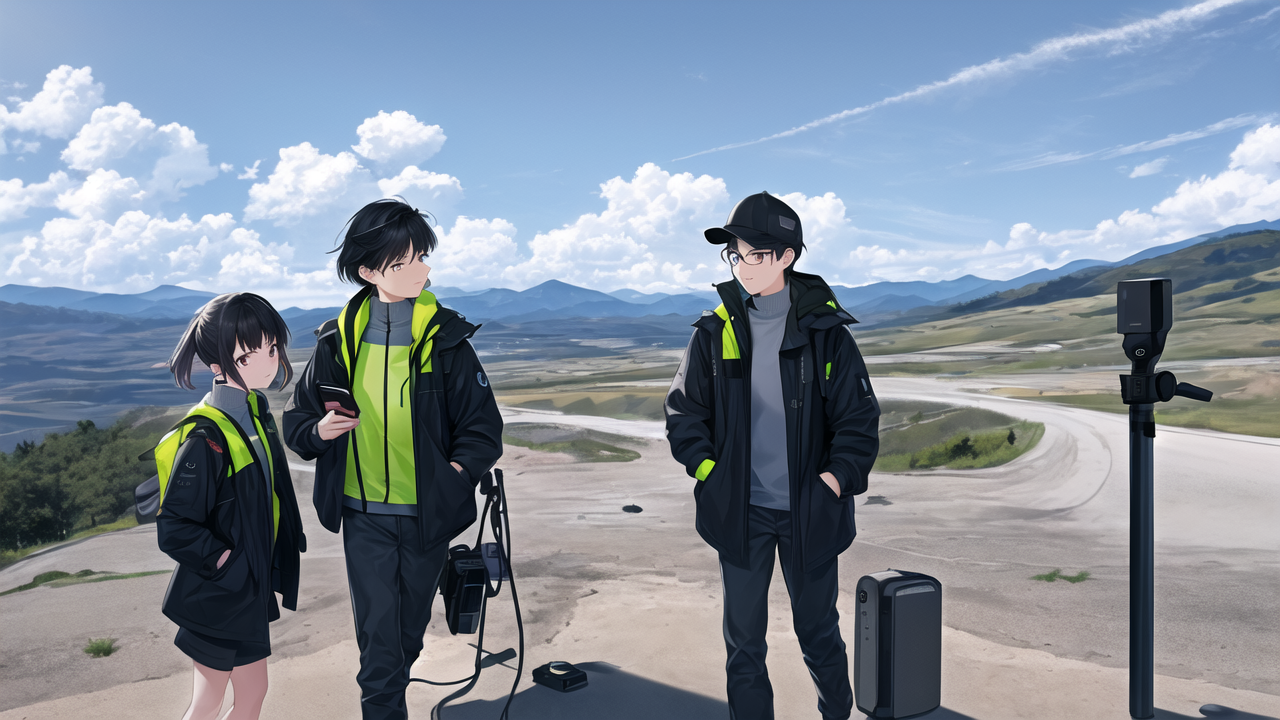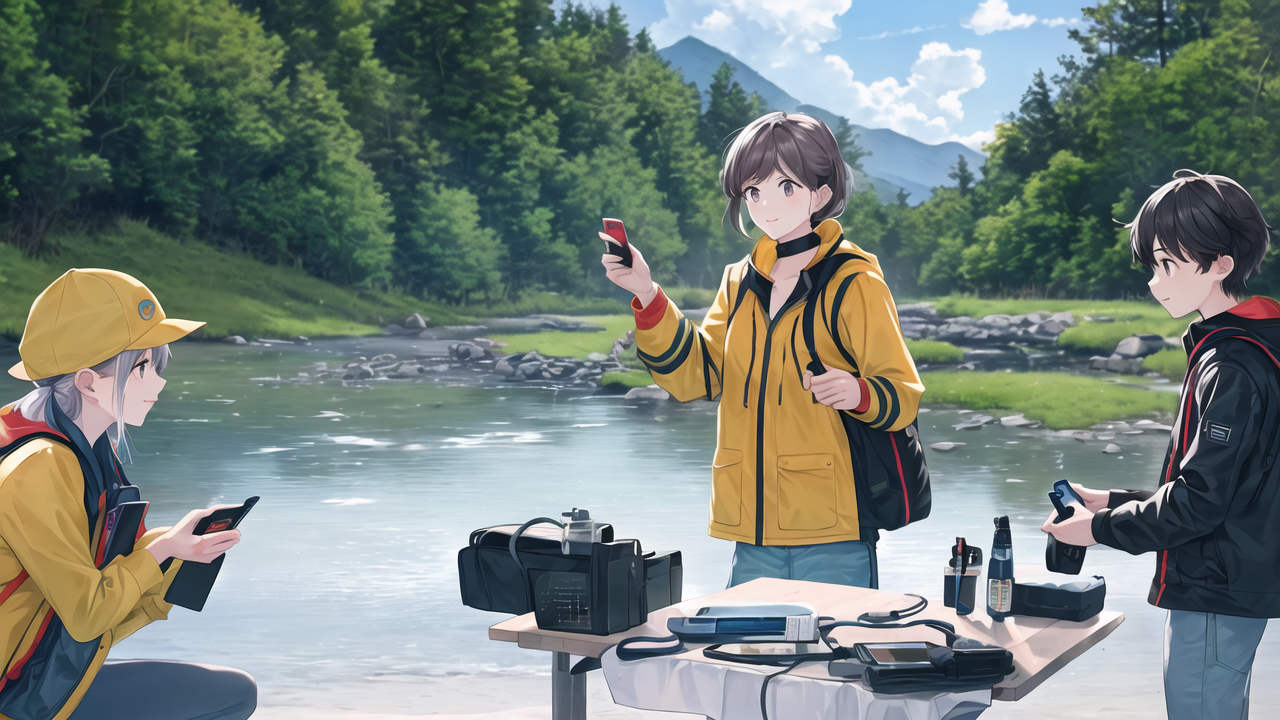Understanding the Basics of Walkie Talkies for Outdoors Enthusiasts
What Are Walkie Talkies and How Do They Work?
Walkie talkies are portable two-way radios. They let people talk over short distances. These devices use radio waves to send and receive voice messages. They work without cell networks or internet.

Walkie talkies have a speaker, microphone, and antenna. To use them, you press a button and speak. The radio sends your voice as a signal. Other walkie talkies on the same channel can pick up this signal.
These devices are great for outdoor use. They work in areas with no cell service. This makes them ideal for hiking and camping trips in remote places.
Key Features to Look for in a Hiking Walkie Talkie
When choosing walkie talkies for hiking, consider these key features:
- Range: Look for devices with a long range, typically 20-35 miles.
- Battery life: Choose models with long-lasting batteries or rechargeable options.
- Durability: Pick rugged, water-resistant units for outdoor use.
- Weight: Opt for lightweight models for easy carrying.
- Channels: More channels mean less interference from other users.
- Privacy codes: These help reduce unwanted chatter on busy channels.
- Weather alerts: Some models receive emergency weather updates.
- GPS: Higher-end units may include GPS for location tracking.
These features ensure your walkie talkies are reliable and useful on the trail.
Legal Considerations and Regulations in the US
In the US, the FCC regulates walkie talkie use. Most hiking walkie talkies use FRS (Family Radio Service) or GMRS (General Mobile Radio Service) frequencies.
FRS walkie talkies are license-free. They have a limited range and power output. GMRS devices offer more range and power. However, they require a license from the FCC.
It's important to follow channel restrictions. Some channels are for emergencies only. Others have power limits. Always check local rules before using walkie talkies in parks or wilderness areas.
Remember, it's illegal to modify walkie talkies to increase their power or range. Stick to approved devices and use them responsibly.
Top Picks: Walkie Talkies That Stand Out in the Great Outdoors
Best Walkie Talkies for Hikers: Reviewing the Top Models
For hikers, the best walkie talkies combine range, durability, and portability. Here are some top picks:

- Motorola T600: These offer excellent range and are fully waterproof.
- Midland GXT1000VP4: Known for clear audio and long battery life.
- BaoFeng BF-F8HP: A powerful option for experienced users.
- Cobra ACXT1035R FLT: Features a built-in flashlight and weather alerts.
These models stand out for their reliability in outdoor settings. They offer good range, clear sound, and rugged designs. Most have weather-resistant features for use in various conditions.
Consider your specific needs when choosing. Some hikers prefer simpler models. Others want advanced features like GPS or weather alerts.
Waterproof and Durable Walkie Talkies for Camping Adventures
Camping often involves exposure to the elements. Waterproof and durable walkie talkies are essential. Here are some top choices:
- Motorola T600: Fully waterproof and it floats.
- Cobra CXT1045R-FLT: Water-resistant with a rugged design.
- Midland GXT1000VP4: Weather-resistant and durable.
- DeWALT DXFRS800: Built tough for harsh conditions.
These models can withstand rain, splashes, and even brief submersion. They're also built to survive drops and rough handling. This makes them ideal for camping trips.
Look for IP ratings when choosing. IPX7 or higher ensures good water protection. Also consider dust resistance for desert camping.
High-Tech Walkie Talkies: A Buyer's Guide to Advanced Features
Modern walkie talkies offer more than just voice communication. Here are some advanced features to consider:
- GPS tracking: Some models let you share your location with other users.
- Bluetooth connectivity: This allows pairing with smartphones or headsets.
- Weather alerts: Receive emergency weather updates directly on your device.
- VOX (Voice-activated transmission): Allows hands-free operation.
- NOAA weather scanning: Automatically scans for weather broadcasts.
- Digital display: Shows channel, battery life, and other important info.
- Vibrate alert: Useful in noisy environments or for silent operation.
These features can enhance safety and convenience. However, they often come at a higher price point. Consider which features are truly necessary for your outdoor activities.
Remember, more features can mean more complexity. Choose a device you're comfortable using in the field.
Evaluating and Choosing Your Walkie Talkie
Assessing Your Needs: Tailoring Your Choice to Your Hiking and Camping Preferences
Choosing the right walkie talkie depends on your specific outdoor activities. Consider these factors:

- Terrain: Hilly areas need more powerful devices for better range.
- Group size: Larger groups may need more channels or privacy codes.
- Trip duration: Longer trips require better battery life or rechargeable options.
- Weather conditions: Frequent rain or snow calls for waterproof models.
- Activity type: Day hikers may need different features than multi-day campers.
Think about how you'll use the walkie talkies. Do you need them mainly for safety? Or for coordinating with a large group? Your answers will guide your choice.
Don't forget to consider ease of use. In an emergency, you want a device you can operate quickly and easily.
The Role of Walkie Talkies in Emergency Situations
Walkie talkies can be crucial in outdoor emergencies. They provide communication when cell phones fail. Here's how they help:
- Group coordination: Keep in touch if your group gets separated.
- Calling for help: Reach out to nearby campers or rangers for assistance.
- Weather warnings: Some models receive emergency weather alerts.
- Search and rescue: Help rescuers locate you in remote areas.
In emergencies, reliable communication can save lives. Choose walkie talkies with good range and clear audio. Consider models with SOS features or NOAA weather alerts.
Practice using your walkie talkies before your trip. Know how to change channels and send distress signals. Keep them charged and easily accessible.
Tips for Selecting the Right Walkie Talkie for the American Outdoors
Here are some final tips for choosing walkie talkies for US hiking and camping:
- Check park rules: Some parks have restrictions on walkie talkie use.
- Consider the region: Different areas may need different ranges or features.
- Read reviews: Look for feedback from hikers and campers in similar settings.
- Test before you buy: Try out different models if possible.
- Consider accessories: Extra batteries, belt clips, or headsets can be useful.
- Look for warranty: A good warranty can protect your investment.
- Balance cost and features: Don't overpay for features you won't use.
Remember, the best walkie talkie is one that meets your needs and that you're comfortable using. Take time to research and choose wisely. Your safety and enjoyment in the outdoors may depend on it.


